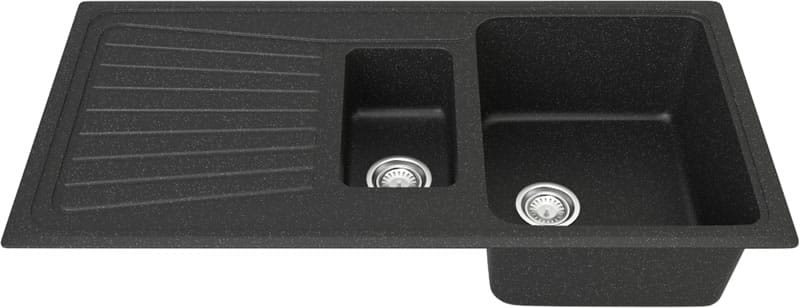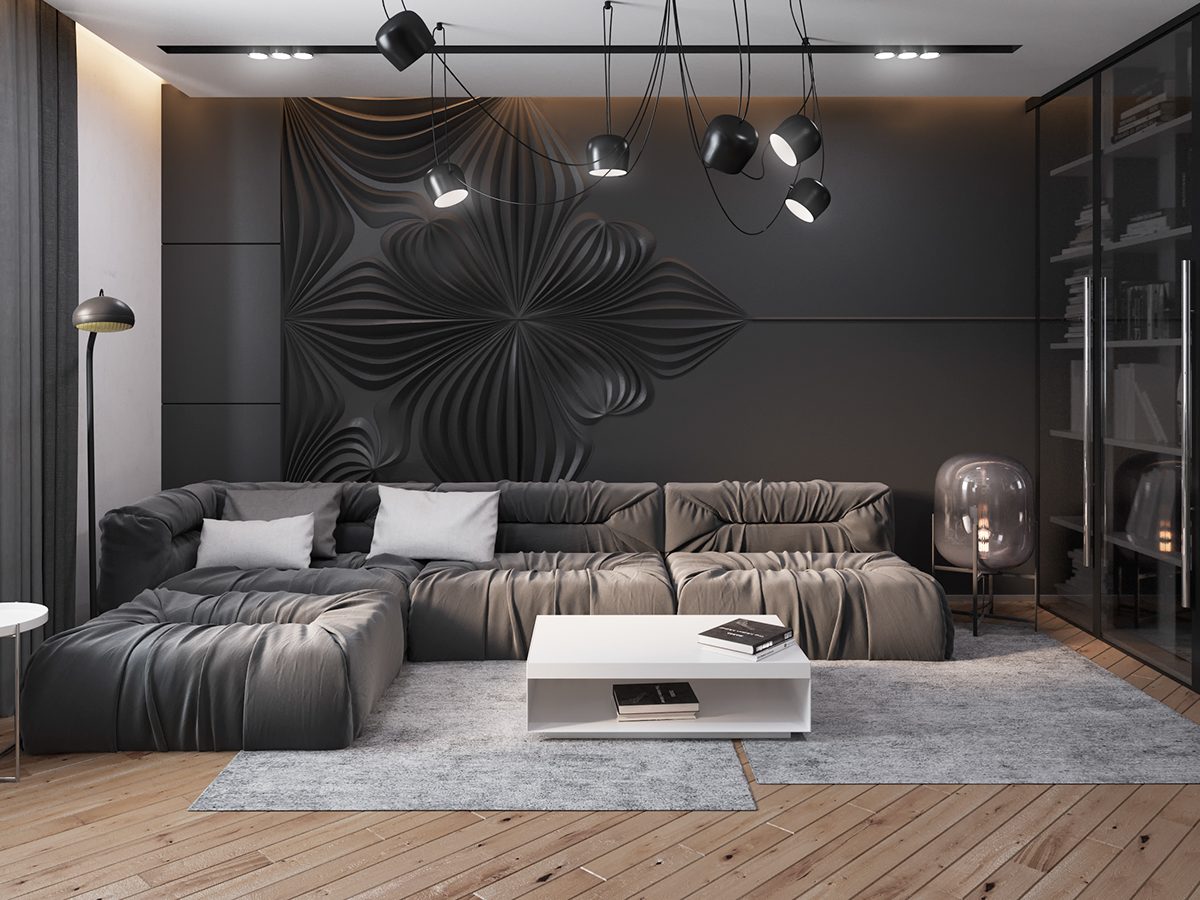When it comes to designing a kitchen, symmetry is often overlooked, yet it plays a vital role in creating a balanced and visually appealing space. From the layout to the smallest detail, incorporating symmetry can elevate the overall design of your kitchen. Here are 10 ways to achieve symmetry in your kitchen design.Symmetry is a Crucial Element in Kitchen Design
The first step to achieving symmetry in your kitchen is through the layout. Having a well-balanced and symmetrical layout creates a sense of harmony in the space. Consider elements such as the placement of the kitchen island, cabinets, and appliances to ensure a balanced and symmetrical design.1. Layout
A cohesive color scheme is essential in creating a symmetrical design. Pick a color palette and stick to it throughout the kitchen, from the walls to the cabinets and accessories. Don't be afraid to play with different shades and textures to add depth and dimension to the space.2. Color Scheme
Cabinets are a prominent feature in any kitchen, and incorporating symmetry in their design can make a significant impact. Opt for matching cabinets on either side of the room, or choose symmetrical patterns or designs for the cabinet doors. This will create a sense of balance and add visual interest to the space.3. Cabinet Design
Another way to achieve symmetry in your kitchen is through the countertop material. Whether you choose marble, quartz, or granite, make sure it is consistent throughout the entire kitchen. This will create a seamless look and add to the overall symmetry of the space.4. Countertop Material
Lighting is not only functional but can also be used to add symmetry to your kitchen design. Consider installing matching pendant lights above the kitchen island or symmetrical wall sconces on either side of the sink. This will not only provide ample light but also create a visually balanced design.5. Lighting
Hardware, such as cabinet handles and knobs, may seem like a minor detail, but they can make a significant impact in creating symmetry in your kitchen. Choose hardware that matches in style and color and place them symmetrically on cabinets and drawers.6. Hardware
Incorporating symmetry in the placement of appliances can greatly impact the overall design of your kitchen. Opt for matching appliances on either side of the room, or create symmetry by placing the refrigerator and oven at opposite ends of the kitchen. This will not only look visually appealing, but it will also create a functional balance in the space.7. Appliances
In addition to symmetry within the layout and design, it is important to have a balance between vertical and horizontal elements in your kitchen. This means incorporating both tall and short elements, such as cabinets and countertops, to create a visually balanced design.8. Balance between Vertical and Horizontal Elements
Visual repetition is a key element in symmetry. This can be achieved by using the same design or material in various areas of the kitchen. For example, use the same backsplash tile on both sides of the room or incorporate matching decor on open shelving on either side of the stove.9. Creating Visual Repetition
Last but not least, incorporating mirrors into your kitchen design can be a great way to add symmetry and make the space feel larger. Consider placing a large, decorative mirror above the sink or incorporating mirrored backsplash to create a reflective, symmetrical design. Incorporating symmetry in your kitchen design takes attention to detail and careful planning, but the end result is a beautifully balanced and visually appealing space. So, keep these 10 elements in mind when designing your kitchen to achieve the perfect symmetry.10. Use of Mirrors
Symmetry in Kitchen Design: Creating Balance and Harmony
Why Symmetry is Important in Kitchen Design
 Symmetry is a key element in creating a visually appealing and functional kitchen. It involves balancing and harmonizing the different elements in the room, resulting in a pleasing and organized space. The use of symmetry in kitchen design not only enhances the overall aesthetic but also improves the functionality and flow of the space.
Symmetry in kitchen design emphasizes the equal distribution of weight and visual balance between the different aspects of the kitchen, such as cabinets, appliances, and countertops.
It not only creates a sense of order and harmony, but it also allows for easier movement and accessibility in the kitchen.
Symmetry is a key element in creating a visually appealing and functional kitchen. It involves balancing and harmonizing the different elements in the room, resulting in a pleasing and organized space. The use of symmetry in kitchen design not only enhances the overall aesthetic but also improves the functionality and flow of the space.
Symmetry in kitchen design emphasizes the equal distribution of weight and visual balance between the different aspects of the kitchen, such as cabinets, appliances, and countertops.
It not only creates a sense of order and harmony, but it also allows for easier movement and accessibility in the kitchen.
Creating Balance with Cabinetry
 One of the main components of a kitchen is cabinetry, and it plays a significant role in achieving symmetry in kitchen design.
When designing a kitchen, it is crucial to keep the layout and size of cabinetry in mind to maintain a symmetrical balance. For example, having an equal number of cabinets on either side of the range hood or sink creates a sense of equilibrium.
Using identical cabinet styles, hardware, and finishes on both sides also contribute to a harmonious look.
Additionally, incorporating a centered, built-in pantry or refrigerator can add to the symmetrical design and create a focal point in the kitchen.
One of the main components of a kitchen is cabinetry, and it plays a significant role in achieving symmetry in kitchen design.
When designing a kitchen, it is crucial to keep the layout and size of cabinetry in mind to maintain a symmetrical balance. For example, having an equal number of cabinets on either side of the range hood or sink creates a sense of equilibrium.
Using identical cabinet styles, hardware, and finishes on both sides also contribute to a harmonious look.
Additionally, incorporating a centered, built-in pantry or refrigerator can add to the symmetrical design and create a focal point in the kitchen.
The Importance of Countertops and Appliances
 Countertops and appliances are significant features in a kitchen that require careful consideration when it comes to symmetry.
The placement and size of these elements can greatly impact the overall balance of the space.
Having matching countertops on either side of the sink or stove can create a sense of continuity and balance.
Consider incorporating symmetrical features, like a double oven or dual sinks, to maintain the design's equilibrium. Lighting fixtures and other decorative elements, such as artwork or plants, can also be strategically placed to further enhance the symmetry in the kitchen.
Countertops and appliances are significant features in a kitchen that require careful consideration when it comes to symmetry.
The placement and size of these elements can greatly impact the overall balance of the space.
Having matching countertops on either side of the sink or stove can create a sense of continuity and balance.
Consider incorporating symmetrical features, like a double oven or dual sinks, to maintain the design's equilibrium. Lighting fixtures and other decorative elements, such as artwork or plants, can also be strategically placed to further enhance the symmetry in the kitchen.
Symmetrical Design for Functionality
 Symmetry in kitchen design not only enhances the aesthetic but also improves the functionality of the space.
The equal distribution of weight and visual balance can make it easier to access and maneuver around the kitchen.
This is especially important for avid cooks who need an efficient and well-organized space to prepare meals. Having a symmetrical layout can also make it easier to store and access kitchen items, as they are evenly distributed and easily reachable.
In conclusion, incorporating symmetry in kitchen design is essential for creating balance and harmony in the space.
It is a key element in achieving a visually appealing and functional kitchen.
Whether it's through cabinetry, countertops, or appliances, symmetry adds a sense of order and balance to the room. So the next time you're designing a kitchen, don't forget to consider incorporating symmetrical elements for a truly cohesive and beautiful design.
Symmetry in kitchen design not only enhances the aesthetic but also improves the functionality of the space.
The equal distribution of weight and visual balance can make it easier to access and maneuver around the kitchen.
This is especially important for avid cooks who need an efficient and well-organized space to prepare meals. Having a symmetrical layout can also make it easier to store and access kitchen items, as they are evenly distributed and easily reachable.
In conclusion, incorporating symmetry in kitchen design is essential for creating balance and harmony in the space.
It is a key element in achieving a visually appealing and functional kitchen.
Whether it's through cabinetry, countertops, or appliances, symmetry adds a sense of order and balance to the room. So the next time you're designing a kitchen, don't forget to consider incorporating symmetrical elements for a truly cohesive and beautiful design.

Why Symmetry is Important in Kitchen Design
 Symmetry is a key element in creating a visually appealing and functional kitchen. It involves balancing and harmonizing the different elements in the room, resulting in a pleasing and organized space. The use of symmetry in kitchen design not only enhances the overall aesthetic but also improves the functionality and flow of the space.
Symmetry in kitchen design emphasizes the equal distribution of weight and visual balance between the different aspects of the kitchen, such as cabinets, appliances, and countertops.
It not only creates a sense of order and harmony, but it also allows for easier movement and accessibility in the kitchen.
Symmetry is a key element in creating a visually appealing and functional kitchen. It involves balancing and harmonizing the different elements in the room, resulting in a pleasing and organized space. The use of symmetry in kitchen design not only enhances the overall aesthetic but also improves the functionality and flow of the space.
Symmetry in kitchen design emphasizes the equal distribution of weight and visual balance between the different aspects of the kitchen, such as cabinets, appliances, and countertops.
It not only creates a sense of order and harmony, but it also allows for easier movement and accessibility in the kitchen.
Creating Balance with Cabinetry
 One of the main components of a kitchen is cabinetry, and it plays a significant role in achieving symmetry in kitchen design.
When designing a kitchen, it is crucial to keep the layout and size of cabinetry in mind to maintain a symmetrical balance. For example, having an equal number of cabinets on either side of the range hood or sink creates a sense of equilibrium.
Using identical cabinet styles, hardware, and finishes on both sides also contribute to a harmonious look.
Additionally, incorporating a centered, built-in pantry or refrigerator can add to the symmetrical design and create a focal point in the kitchen.
One of the main components of a kitchen is cabinetry, and it plays a significant role in achieving symmetry in kitchen design.
When designing a kitchen, it is crucial to keep the layout and size of cabinetry in mind to maintain a symmetrical balance. For example, having an equal number of cabinets on either side of the range hood or sink creates a sense of equilibrium.
Using identical cabinet styles, hardware, and finishes on both sides also contribute to a harmonious look.
Additionally, incorporating a centered, built-in pantry or refrigerator can add to the symmetrical design and create a focal point in the kitchen.
The Importance of Countertops and Appliances
 Countertops and appliances are significant features in a kitchen that require careful consideration when it comes to symmetry.
The placement and size of these elements can greatly impact the overall balance of the space.
Having matching countertops on either side of the sink or stove can create a sense of continuity and balance.
Consider incorporating symmetrical features, like a double oven or dual sinks, to maintain the design's equilibrium. Lighting fixtures and other decorative elements, such as artwork or plants, can also be strategically placed to further enhance the symmetry in the kitchen.
Countertops and appliances are significant features in a kitchen that require careful consideration when it comes to symmetry.
The placement and size of these elements can greatly impact the overall balance of the space.
Having matching countertops on either side of the sink or stove can create a sense of continuity and balance.
Consider incorporating symmetrical features, like a double oven or dual sinks, to maintain the design's equilibrium. Lighting fixtures and other decorative elements, such as artwork or plants, can also be strategically placed to further enhance the symmetry in the kitchen.
Symmetrical Design for Functionality
 Symmetry in kitchen design not only enhances the aesthetic but also improves the functionality of the space.
The equal distribution of weight and visual balance can make it easier to access and maneuver around the kitchen.
This is especially important for avid cooks who need an efficient and well-organized space to prepare meals. Having a symmetrical layout can also make it easier to store and access kitchen items, as they are evenly distributed and easily reachable.
In conclusion, incorporating symmetry in kitchen design is essential for creating balance and harmony in the space.
It is a key element in achieving a visually appealing and functional kitchen.
Whether it's through cabinetry, countertops, or appliances, symmetry adds a sense of order and balance to the room. So the next time you're designing a kitchen, don't forget to consider incorporating symmetrical elements for a truly cohesive and beautiful design.
Symmetry in kitchen design not only enhances the aesthetic but also improves the functionality of the space.
The equal distribution of weight and visual balance can make it easier to access and maneuver around the kitchen.
This is especially important for avid cooks who need an efficient and well-organized space to prepare meals. Having a symmetrical layout can also make it easier to store and access kitchen items, as they are evenly distributed and easily reachable.
In conclusion, incorporating symmetry in kitchen design is essential for creating balance and harmony in the space.
It is a key element in achieving a visually appealing and functional kitchen.
Whether it's through cabinetry, countertops, or appliances, symmetry adds a sense of order and balance to the room. So the next time you're designing a kitchen, don't forget to consider incorporating symmetrical elements for a truly cohesive and beautiful design.


















































































































